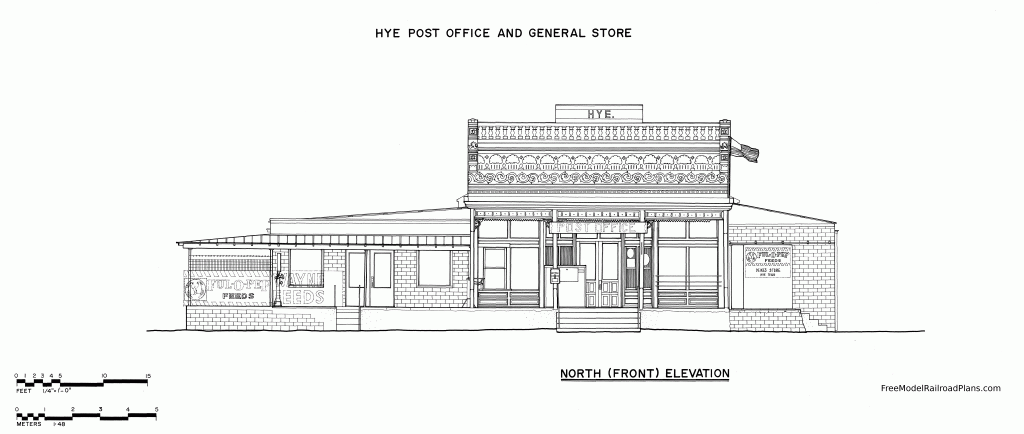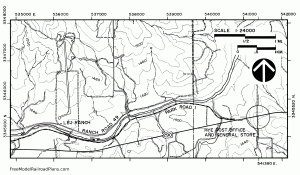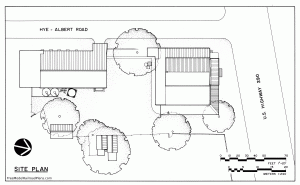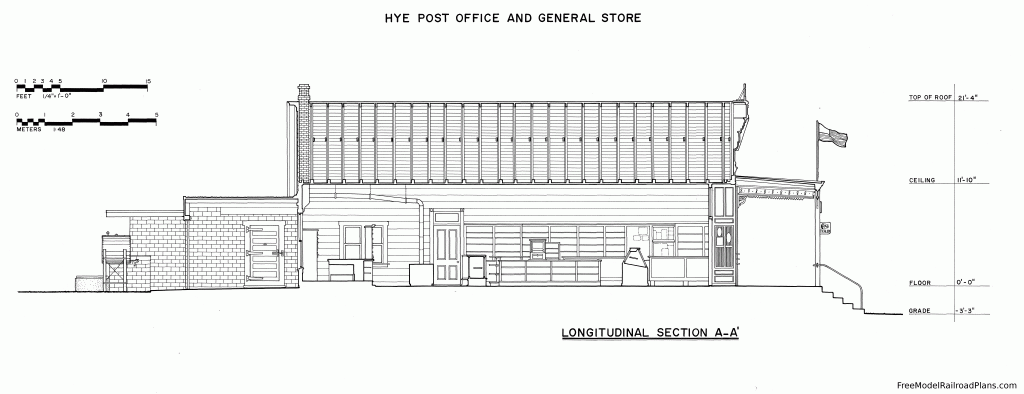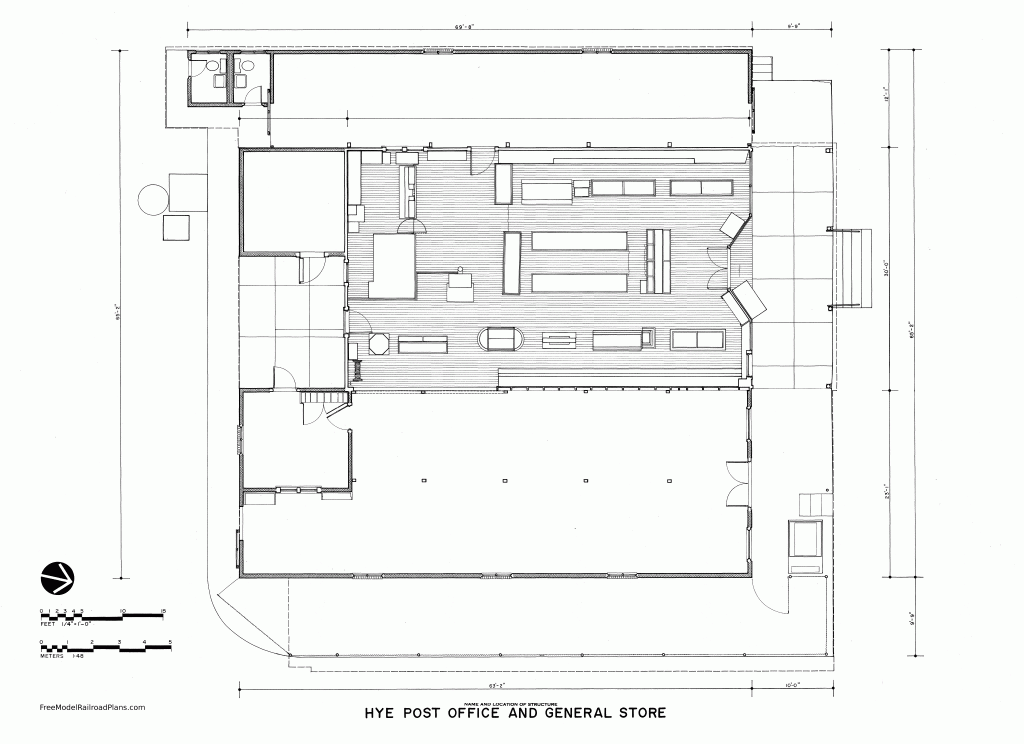Historic Post Office and General Store
In President Lyndon Johnson’s home town
A Piece of Texas History to add to your model railroad layout
Looking to add some Texas twang to your model railroad layout? The post office and general store in President Lyndon Johnson’s hometown of Hye, Texas has that western turn-of-the-century charm perfect for the task. Built in 1904, the Hye, Texas, Post Office & General Store is a one-story frame structure clad in metal siding pressed to resemble stonework.
The front, which faces the highway, is 3 bays in width, with the store entrance set back from the plane of the facade. The front porch is covered by a roof supported by 4 beveled wood posts. A decorative pierced-wood frieze is set between the columns, under the porch roof.
The dominant element of the building’s design is the elaborate pressed metal upper facade, which contains courses of scrollwork as well as a mock balustrade. This is enhanced by dark paint on the relief areas to contrast white paint on the flat areas to exaggerate the three dimensional look. The towns name is emblazoned on the parapet.
In November of 1965 the building was the site of the swearing in of Post Master General of the United States Lawrence F. O’Brien, the fourth cabinet official to be appointed by President Lyndon Johnson. In his speech at the ceremony, President Johnson said the Hye Post Office was where he mailed his first letter in 1912.
The town of Hye is named for Hiram G. “Hye” Brown, a Mississippian who moved to Texas in 1858 with his parents. In 1873 he settled in Blanco County on land on the south bank of the Pedernales River on the road between Austin and Fredericksburg. In April 1886 he was granted a commission to operate a post office from his general store, which he operated untl his death in 1920. In 1923 the general store and post office was sold to Fritz Deike, who continued to operate it at the time of the property survey in 1984.
This survey was a project of the Historic American Buildings Survey, sponsored by the Texas Historical Commission and the Lyndon B. Johnson National Historical Park. Field recording was directed by Kenneth L. Anderson HABS principal architect with Joseph C. Oppermann, deputy state historic preservation officer of the Texas Historical Commission. The measured drawings were created by project supervisor John P. White, associate professor, Texas Tech University, project foreman Marian Dombroski, University of Texas Austin, architectural technicians J. Scott Anderson, Julia R. Blumberg, Michael J. Martin, and Matthew H. Roewe. Historical data was prepared by John C. Ferguson, archtectural historian, Texas Historical Commisson.
